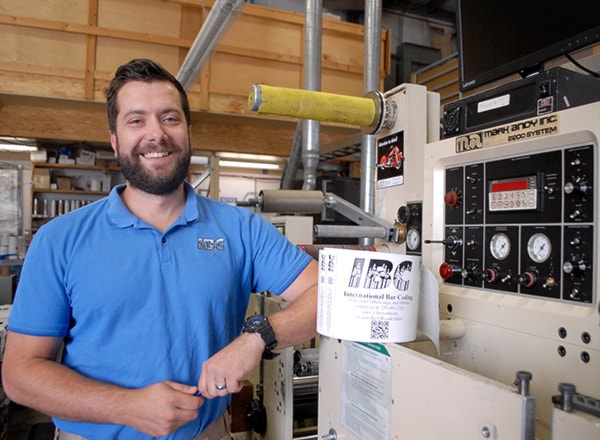International Bar Coding Systems & Consulting takes bar codes far beyond the UPC tags used to price your groceries.
“We helped write the guidelines for how wood products are barcoded at retail, we did that back in the early ‘90s. Anytime you go and buy a 2x4 or a piece of plywood, more often than not, it will have our label on it with our barcode, with a data collection solution tied into that,” said Matt Pedersen, IBC’s business development officer.
Nowadays, the Penticton company supplies solutions allowing a variety of industries to track their product from inception to the consumer and back again.
“We can start with those baby, tiny, foot-tall seedling trees and we are able to track that all the way through to a finished good,” said Pedersen. “When you buy that 2x4, we are able to track it into what pack it was, what position it was made in the mill and what piece of wood was used to make that individual 2x4.”
The fruit and vegetable industry is another sector IBC is active in, and Pedersen said their systems can track an individual piece of fruit from the consumer back to the tree it was picked from. That level of traceability, he explained, allows the grower to track the productivity of individual trees in their orchard, or in the case of a consumer returning a bad piece of fruit to the retailer, trace the problem back not only to the orchard, but a particular tree.
Pedersen is enthusiastic about the work they do at IBC, which includes not only printing barcode labels, but custom crafting the equipment and systems used by their clients.
“There are a lot of businesses and industries that people think of as fun: the tech industry, agritourism,” said Pedersen. “But for us, where we are at here, we have fun solving problems.
“When someone has a challenge and us being able to have a solution for them, that’s fun for us.”
Demand for IBC’s services has grown since Chris Pedersen, Matt’s father, started the business in 1993. That’s been fuelled, Pedersen said, by both increasing demand from companies for better tracking systems, and the growth of technology, allowing IBC to extend their systems farther down the value chain.
“When we first got in a mill and were doing data collection, nobody was doing bar codes because there wasn’t really a big push from the industry.
“As technology has gotten better, it has become a lot easier and more cost effective,” he said. “In the last five to 10 years, we are having more companies come on board and saying yes, we want to be more efficient.”
That includes IBC constructing custom-made labelling gear and systems meant to survive in the harsh environment of a wood mill or other heavy industry.
“In the beginning, there weren’t any devices that would work in a rugged environment,” said Pedersen. “If there is a good chance a device could get run over with a forklift, things don’t survive that well.
“We are creating rugged solutions that will last in that difficult environment.”
Like other companies in Penticton’s industrial district — Brutus Truck Bodies, the Penticton Foundry, Cut Technologies and many others — IBC works on the national and international stage, but gets little recognition closer to home.
“We have been nestled here in the industrial district and kind of hidden from public eye, which we are OK with,” said Pedersen, adding that a new partnership is going to extend their range even further.
With the new partnership, Pedersen said they will be looking at adding to their facility, located on Barnes Road in Penticton’s industrial area.
“They are called the Signode Packaging Group,” said Pedersen, explaining that their new partners are a large U.S. firm specializing in wrapping and strapping solutions in some of the same industries they work in. The deal came about, he said, through a realization how much their products, often found right next to each other in a plant, would benefit from the synergy.
“We were losing on deals because the two of us were competing against a company that would have an integrated approach. And we thought both of our solutions, separately, were more expensive than if we were able to bundle them together,” said Pedersen.
That new partnership, he said, will likely bring an expansion of their facility, which already employs 15 to 20 people, over the next few years.
“We’ve also looked at running a full second shift running into the night to be able to meet that demand,” he said.
